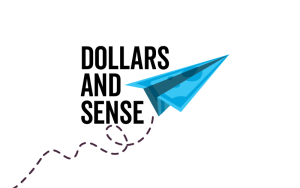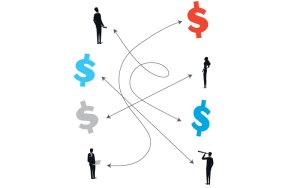[Updated for 2024]
The best approach to deciding whether to use digital printing or offset printing is to analyze the nuances of your print project. In many cases, if you are printing less than 500-1,000 pieces, digital printing is ideal. If you’re printing in excess of 1,000 pieces, opting for offset printing is optimal.
Don’t make the common mistake of assuming that your project will have the same quality, regardless of how it’s printed. The idiosyncrasies of the project, such as its specific size, colors, and order volume, will influence the type of printing that will prove optimal. Let’s delve into the merits of each unique type of printing and explore the printing projects they are best suited for.
Related: Getting Files Ready for Printing: Your Pre-Press Checklist
WHAT IS THE DIFFERENCE BETWEEN OFFSET AND DIGITAL PRINTING
Offset printing is often revered as the higher quality printing option. This is not to say your organization should strictly print projects with offset printing. In fact, digital printing has greatly improved in quality over recent years.
However, digital printing doesn’t use plates in the way offset does. Digital printing is best used when lower quantities are called for. This may be a run of greeting cards, flyers, or pamphlets. Variable data capability is also a key benefit of digital printing. Variable data means that each finished piece has its own unique code, name or address. Offset printing is not able to accomplish this need.
Offset printing provides highly distinct lettering and images that look clean and polished without any visually distracting blemishes or streaks. Offset printing is also held in higher regard for its superior color fidelity, meaning the color balance and the accuracy of the overarching design are of higher quality. Offset printing is designed to combine customized color inks for individual printing projects, ensuring it gets the hues absolutely perfect every single time without exception.
Offset printing also prints much faster than digital printing presses. However, when you take a close look at the outcome of both printing methods, you will find the differences in quality are quite subtle. The question is whether the subtle nuances of your final prints are of the utmost importance to you, your boss, your team, and your customers.
THE COST OF A PRINT PROJECT
The cost of your print project ultimately depends on your specific needs, and the type of printing you choose will impact this. Offset printing requires the use of plates, meaning each individual print job is made into a plate. This approach requires that the press is individually established for each print job. This means that there will be an inherent, upfront fee for print projects, regardless of whether you need dozens, hundreds, or thousands of pieces printed. Alternatively, digital printing does not use plates, ultimately resulting in a flat price for each piece printed.
QUANTITY: LARGE RUNS AND SHORT RUNS
Digital printing does not require a setup fee for short runs, meaning it is that much more affordable than offset printing. Offset printing, by contrast, prints so fast that the offset price for each individual piece can fluctuate. Basically, the more pieces printed, the more the price of each individual print decreases. Therefore, offset printing is much more affordable for large runs than digital printing, as the setup fee is offset by the reduced price for each piece printed. As noted above, offset printing is ideal for printing 500-1,000 pieces. Digital printing is ideal when printing smaller amounts.
Related: Get Your Print Projects Done Faster (and Easier)
MATERIAL AND COLOR
If the print job requires color, and there is a significant volume, offset printing is likely to be ideal. However, if the project is not monochromatic, or extends beyond merely a couple colors, digital printing is a more economically sound solution. In terms of material, digital printing is more flexible, but offset printing is still revered as superior for printing onto unique materials such as plastic and metal.
Regardless of what printing choice you go with, Ironmark’s experts are here to work with you from start to finish. Get in touch today and get your print project started on the right foot, and be ready to print like a pro.




